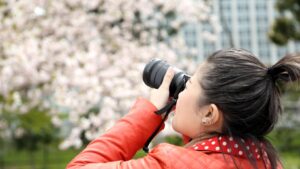Stepping into the world of image photography is like embarking on a visual journey where every click captures a moment, a story, a feeling. As a photographer, I’ve come to appreciate the artistry and technical finesse required to freeze time in a frame. From landscapes that whisper tales of distant lands to portraits that reveal the soul behind the eyes, image photography is a powerful medium of expression.
Join me as we unravel the secrets behind striking images that resonate with viewers long after they’ve been captured.
Image Photography
The Evolution of Image Photography

Exploring the evolution of image photography is a fascinating journey through time. From the early days of cumbersome cameras requiring long exposure times to the modern era of high-speed digital photography, the technology and techniques have advanced significantly. Understanding the evolution of image photography provides insights into how far the art form has come and the innovations that have transformed it into the digital age.
As I delve into the history of image photography, I uncover a timeline rich in milestones that have shaped the way we capture moments. Each technological advancement, from the invention of the first camera obscura to the development of film and digital sensors, has contributed to the way we perceive and create images. By understanding the evolution of image photography, I gain a deeper appreciation for the craft and the continuous progression that fuels creativity in this dynamic field.
Key Principles and Techniques
Mastering the key principles and techniques of image photography is essential for creating compelling visuals that resonate with viewers. As I focus on the fundamentals, I realize the critical role that light, composition, and subject play in capturing captivating images. Light is the essence of photography, dictating mood, tone, and visual impact. By harnessing the qualities of light, I can enhance the narrative and aesthetic appeal of my photos.
Composition serves as the foundation of a strong image, guiding the viewer’s eye and conveying the photographer’s intention. Understanding compositional techniques such as the rule of thirds, leading lines, and framing empowers me to create visually engaging photographs that command attention.
As I hone my skills in image photography, I continually revisit these key principles and techniques to elevate my craft and produce images that resonate with my audience. By mastering the interplay of light, composition, and subject, I unlock the full potential of image photography and create visuals that captivate and inspire.
Essential Equipment for Image Photography
Cameras: DSLRs vs Mirrorless

When it comes to image photography, the choice between DSLR and mirrorless cameras can significantly impact the quality of your shots. DSLRs, with their optical viewfinders and longer battery life, offer great versatility for various shooting conditions. On the other hand, mirrorless cameras are known for their compact size, silent operation, and innovative features like electronic viewfinders. Assessing your photography needs and preferences is crucial in selecting the ideal camera type for capturing stunning images.
Lenses: Fixed vs Zoom
Selecting the right lens is paramount in image photography to achieve the desired composition and visual impact. Fixed focal length lenses, also known as prime lenses, provide superior image quality, sharpness, and wider apertures for creative depth of field effects. Conversely, zoom lenses offer versatility by allowing you to zoom in and out without changing lenses, making them suitable for various shooting scenarios. Understanding the differences between fixed and zoom lenses will help you capture images with precision and finesse.
Tripods, Lights, and Other Accessories
In addition to cameras and lenses, incorporating tripods, lights, and other accessories into your image photography gear can elevate the quality of your shots. Tripods provide stability and allow for long exposure shots and precise framing, essential for landscape and portrait photography. Lighting equipment, such as external flashes and continuous lights, enables you to control light intensity and direction, enhancing the mood and aesthetics of your images. Investing in quality accessories tailored to your photography style can enhance your creative vision and proficiency in image photography.
